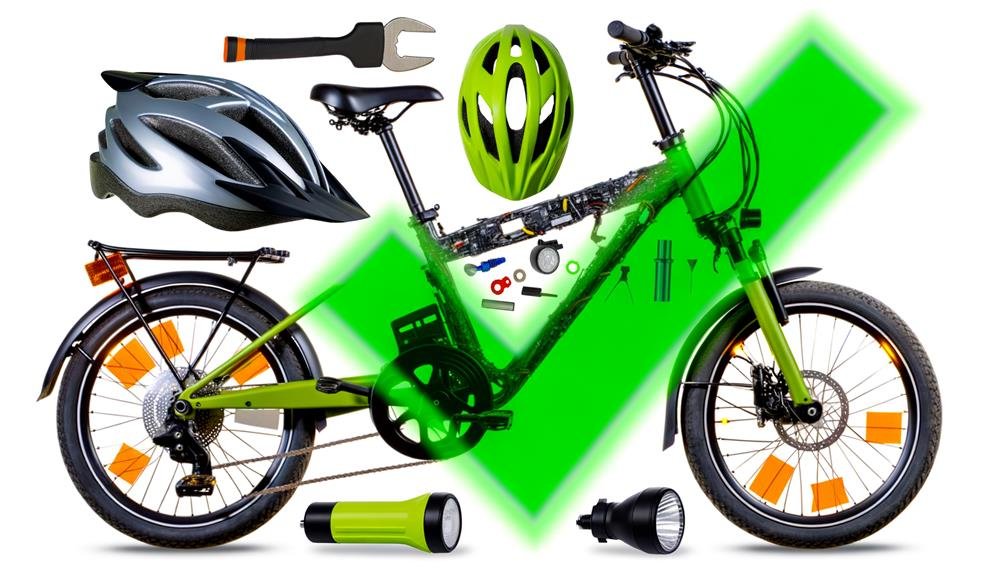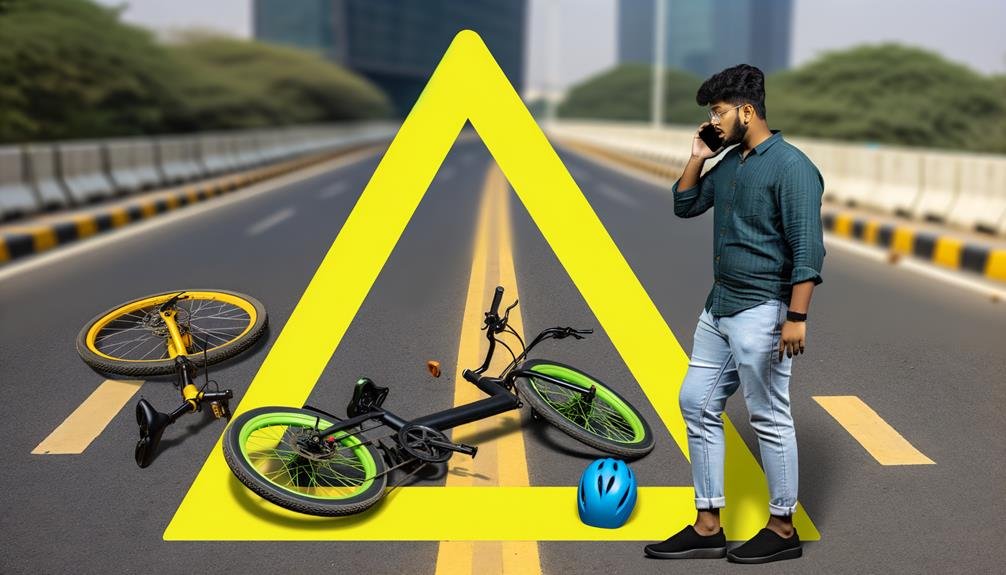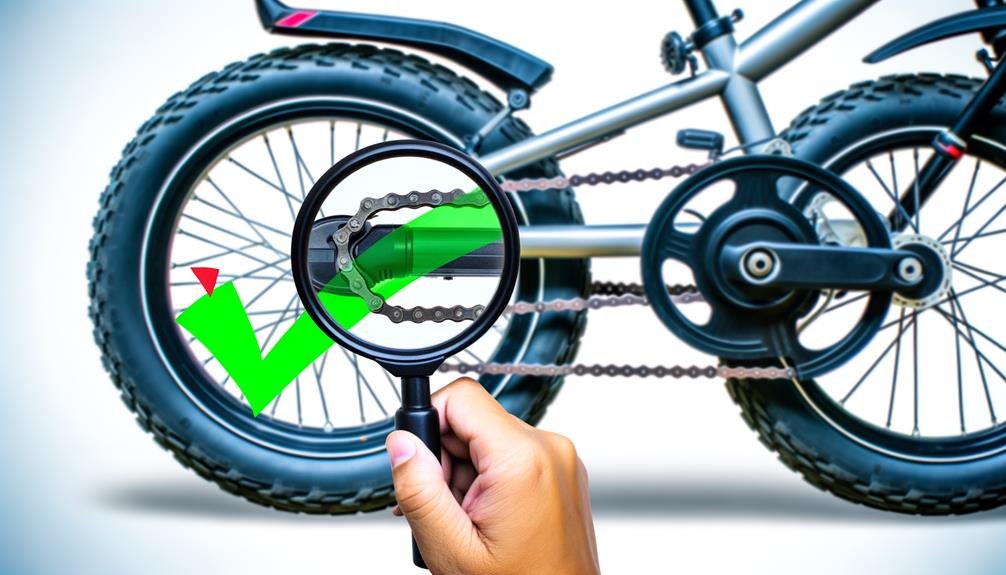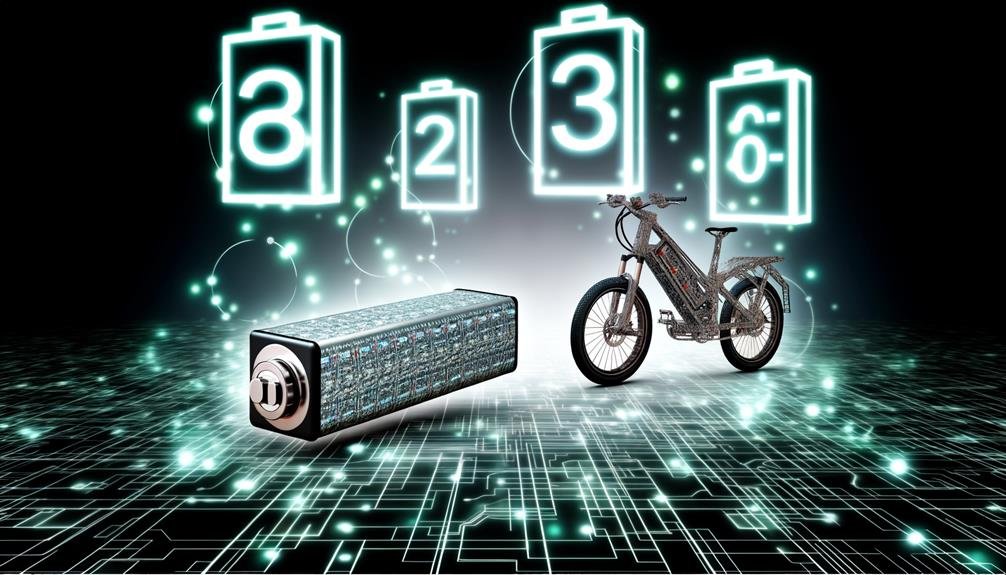Charles Miller is a veteran bike enthusiast with over 12 years of experience dealing with bikes as a mechanic. Despite immense love and expertise for...
As we all know, electric bikes are the equivalent of unicorns – mystical creatures that can apparently solve all our commuting problems! But let's get serious, are they really safe?
There's a lot of debate around this topic, some swear by their safety and efficiency, while others can't help but question it. Undoubtedly, the rising popularity of e-bikes commands a closer examination of their safety.
Let's peel back the layers of hyperbole and investigate the real facts, shall we? You might be surprised to discover what we find.
- Key Takeaways
- Understanding E-Bike Construction
- Electric Bike Speed Capabilities
- The Role of User Behavior
- Debunking E-Bike Misconceptions
- Comparing E-Bikes to Traditional Bikes
- E-Bike Risk and Injury Statistics
- Safety Measures for E-Bike Riders
- Post-Accident Steps for E-Bike Riders
- Frequently Asked Questions
- Conclusion
Key Takeaways
- Understanding e-bike construction and speed regulations is important for safe and legal operation.
- User behavior, such as wearing safety gear and adhering to traffic laws, significantly impacts e-bike safety.
- E-bikes pose unique risks and require extra caution due to their higher speeds and additional weight.
- Regular maintenance, including checking brakes and tires, is crucial for ensuring e-bike safety.
Understanding E-Bike Construction
To fully grasp the safety of electric bikes, we must first delve into their construction, understanding that they're two- or three-wheel vehicles, equipped with pedals and an electric motor rated below 750 watts. The essence of these electric bicycles lies in their design, which is broadly classified into three tiers, each with specific motor assistance and speed limitations.
E-bikes aren't just about speed and convenience, they're also about safety. The UL 2849 certification, for instance, is a testament to their resistance to fire hazards. Additionally, these bikes are often third-party tested, ensuring their frames and components meet the highest safety standards.
We can't stress enough the importance of professional assembly and regular maintenance. These two factors play a crucial role in ensuring the reliable operation of these bikes. The brakes, chains, and other components need regular check-ups, enhancing not just the longevity but also the safety of these vehicles.
While we enjoy the thrill and convenience of electric bikes, let's not forget our responsibility as riders. Prioritizing slow and safe riding, maintaining our bikes properly, and staying aware of our surroundings are all part of a secure riding experience. Remember, our safety is in our hands.
Electric Bike Speed Capabilities
When considering the safety of electric bikes, it's crucial we examine their speed capabilities.
First, we'll explore the speed regulations that govern each class of e-bikes.
Then, we'll analyze how these speed caps can impact rider safety.
Lastly, we'll draw comparisons between the speed capabilities of traditional bikes and their electric counterparts.
Understanding Speed Regulations
Navigating the intricacies of electric bike speed capabilities, it's essential to know that these bikes are classified into three tiers based on their features and restrictions, with state laws dictating their maximum speed.
Class 1 and 2 e-bikes typically reach 20 mph, while Class 3 e-bikes can go up to 28 mph. State regulations not only govern speed but also age restrictions.
Understanding these laws ensures we ride within legal boundaries and contribute to overall safety. This three-tier system assists us in comprehending the speed capabilities of the e-bike models we might be considering.
To further ensure safety, we recommend purchasing UL 2849-certified e-bikes and prioritizing professional assembly and regular maintenance.
Impact on Rider Safety
Building on our understanding of e-bike speed regulations, we now turn our attention to the impact these speed capabilities have on rider safety. E-bikes are classified into three tiers, each with different speed caps. The higher the speed, the greater the risk, emphasizing the need for caution while riding.
Moreover, the varying regulations governing e-bike usage can significantly impact rider safety. Hence, awareness of local laws is crucial. The speed capabilities of e-bikes, although thrilling, pose safety risks for both riders and pedestrians.
To ensure a safer ride, several factors should be considered:
- Keeping e-bikes well-maintained
- Practicing slow and safe riding
- Using UL 2849-certified e-bike systems
Comparing Traditional and E-Bikes
In comparing traditional bicycles and e-bikes, we must consider their distinct speed capabilities and the implications this has on safety, with the latter's classification into three tiers each offering different speed and motor usage capabilities. Traditional bikes allow us to control speed with our own strength and endurance, while e-bikes offer a motorized boost, which can be both a blessing and a potential risk.
Consider the following table:
| Traditional Bicycles | E-Bikes | |
|---|---|---|
| Speed | User-determined | Up to 20 mph |
| Control | User-controlled | User and motor-controlled |
| Safety | Consistent | Variable |
As we can see, comparing traditional and e-bikes highlights the flexibility and potential risks associated with e-bikes. We must respect these differences to ensure our belonging in the wider community of safe cyclists.
The Role of User Behavior
Undeniably, user behavior significantly influences the safety of electric bikes. Riders need to adhere to traffic laws, wear helmets, and practice caution at all times. Proper maintenance and cautious riding are essential user behaviors that contribute to the safety of e-bikes. As riders, we must remember that the weight and speed of e-bikes necessitate this caution.
Let's explore three aspects of user behavior that are crucial for ensuring e-bike safety:
- Increasing our visibility: When we're visible on the road, chances of collisions are minimized. We should wear reflective clothing and use bike lights.
- Learning and mastering braking techniques: E-bikes are heavier and faster. We must be proficient in using both front and rear brakes to prevent accidents.
- Maintaining our bikes: Regular maintenance checks, especially for brakes and tires, are critical. We should never compromise on the quality of our e-bike components.
Debunking E-Bike Misconceptions

As we move to debunk e-bike misconceptions, it's vital to address both the facts and fallacies surrounding their safety.
We'll unpack the classifications, regulations, and eco-friendly benefits of e-bikes while also acknowledging concerns about potential risks.
Understanding E-Bike Safety
Navigating through the sea of misconceptions surrounding e-bike safety, it's essential to remember that e-bikes, just like traditional bicycles, are subject to the same safety regulations and riders should adhere to traffic laws and wear helmets.
Understanding e-bike safety isn't just about debunking myths, it's about fostering a deeper appreciation of this sustainable mode of transport. Let's take a closer look at some key points:
- E-bikes offer a greener, more inclusive way to travel, easing congestion and enabling riders of different abilities to enjoy cycling.
- E-bikes that are well-maintained and comply with safety standards can be both cost-effective and safe.
- Riders should ensure their e-bikes have UL 2849-certified systems, sturdy frames, and are regularly checked for defects.
Dispelling E-Bike Myths
Building on our understanding of e-bike safety, let's now debunk some common misconceptions and myths associated with electric bikes. Dispelling e-bike myths is vital to getting a clear picture of their benefits and drawbacks.
Here's a quick overview in table format:
| Myth | Truth | Impact |
|---|---|---|
| E-bikes are unsafe | E-bikes require same safety regulations as traditional bikes | Promotes responsible use |
| E-bikes are for lazy people | E-bikes cater to varying fitness levels and physical abilities | Encourages inclusivity |
| E-bikes are environmentally harmful | E-bikes offer environmental benefits | Supports sustainability |
Comparing E-Bikes to Traditional Bikes
When we delve into the comparison between e-bikes and traditional bikes, it's clear that several key differences emerge, notably in the areas of propulsion, speed capabilities, legal regulations, and maintenance requirements.
E-bikes are equipped with an electric motor, allowing riders the choice between pedaling, using the motor, or a combination of both. This is a stark contrast to traditional bikes, which rely solely on human power. This mechanical assistance means that e-bikes can reach speeds up to 20 miles per hour, far surpassing the capabilities of most traditional bikes.
Additionally, the legalities of riding e-bikes are different:
- E-bike riders must adhere to specific state laws and minimum age requirements.
- E-bikes classifications can affect the applicable laws.
- Traditional bikes generally follow standard traffic laws and regulations.
Maintenance is another area where e-bikes differ. While both types of bikes require regular upkeep, e-bike riders should be mindful of the additional weight and speed factors, necessitating extra caution during operation.
In comparing e-bikes to traditional bikes, we see that e-bikes offer a versatile, accessible, and environmentally friendly alternative, while traditional bikes provide a purely human-powered, health-boosting form of transport. Both have their place in our cycling community.
E-Bike Risk and Injury Statistics

Undeniably, e-bike riders face a higher risk of internal injuries compared to their traditional bike counterparts, with data indicating a 17% risk for e-bike accident victims in contrast to a 7.5% risk for pedal-bike accident victims. E-bike risk and injury statistics further reveal that injuries from e-bike accidents are three times more likely to involve a crash with a pedestrian. These figures are enough to raise eyebrows.
However, it's worth noting that there isn't enough data to give a definitive verdict on the overall safety of e-bikes. After all, they're still relatively new players in the world of mobility. Nevertheless, several studies do point to an increased risk of injury for e-bike riders. This isn't to scare you away from e-bikes, but to help us all understand the risks involved better.
In the spirit of promoting safety and belonging in our e-bike community, we must advocate for responsible riding, observing traffic rules, and using safety gear. As more and more of us switch to e-bikes, it's crucial that we're aware of the risks and take necessary precautions. Yes, e-bikes bring speed and convenience, but let's ensure they also bring safety.
Safety Measures for E-Bike Riders
While understanding the risks is crucial, it's equally important, if not more, to focus on the measures we can take to ensure our safety while riding e-bikes. As part of our community, we share a common goal of safe and enjoyable e-bike usage. To achieve this, we've compiled key safety measures for e-bike riders.
- First, always wear a helmet to protect your head from potential injuries and adhere to traffic laws. These rules aren't merely suggestions but mandates designed for our protection.
- Regular maintenance of the e-bike is crucial. This includes checking brakes, tires, and battery. Considering the speed and weight of e-bikes, their operation must be safe and reliable.
- Lastly, being aware of surroundings and riding defensively is critical. We're sharing the road with other vehicles and must prioritize safety.
Additionally, choosing UL 2849-certified e-bike systems and batteries is a wise decision, minimizing fire hazards and ensuring adherence to strict safety standards.
Let's make the most of our e-bike experience by taking these steps to ensure we're not just riders, but safe riders.
Post-Accident Steps for E-Bike Riders

Navigating the aftermath of an e-bike accident can be daunting, but it's essential to know the necessary steps to ensure our safety and protect our rights.
The first of the post-accident steps for e-bike riders is to call 911 immediately. Even if we can't see any injuries, internal damage is possible, and we can't afford to take risks with our health.
We must also refrain from riding the e-bike until we've more information about its safety. We're part of a community that values safety and wellness, so let's consider the benefits of traditional bike riding and walking, at least for now.
Next, we need to follow the same procedures as any other accident, which includes seeking medical attention. Even minor accidents can lead to serious complications if not properly treated.
Furthermore, staying informed about safety updates and guidelines related to e-bike accidents is crucial. We need to be proactive about our safety, taking every precaution to prevent future accidents.
Frequently Asked Questions
What Are the Risks of Electric Bikes?
We've analyzed accident statistics and found that electric bikes can pose risks. Higher speeds may lead to severe injuries. It's crucial we prioritize proper maintenance, professional assembly, and adherence to traffic laws for safety.
Are Ebikes Safe to Ride?
We're firm believers that with proper ebike maintenance, they're as safe as houses. Regular check-ups, adhering to traffic rules and wearing safety equipment can drastically minimize any potential risks, making your ride smooth and secure.
What Are the Drawbacks of Electric Bikes?
We've noted that electric bikes, while convenient, do present drawbacks such as potential battery hazards. These can lead to severe accidents, and bypassing speed limits may increase the risk of injuries.
Which Is Safer Electric Bike or Scooter?
We've compared scooters and electric bikes. Our analysis shows e-bikes are generally safer. They're more stable, easier to handle, and subject to bicycle laws. Still, it's crucial to wear helmets and follow traffic rules.
Conclusion
Just as sailors navigate stormy seas with caution, we must also steer our e-bikes responsibly. E-bikes, like any vessel, are as safe as the hands that guide them.
Misconceptions can create unnecessary fear, but data shows e-bikes are a reliable steed when treated with care. Safety measures, regular upkeep, and mindful riding are our lighthouse in foggy conditions, ensuring we reach our destination unscathed.
So, let's embrace the e-bike wave, armed with knowledge and responsibility, for a greener, safer journey.

Charles Miller is a veteran bike enthusiast with over 12 years of experience dealing with bikes as a mechanic. Despite immense love and expertise for his Tacoma, he rides his Trek Ebike more. Anytime you meet him, you’ll either hear him talking about Bikes, or writing about all things bikes and cars on this blog.
More Posts


